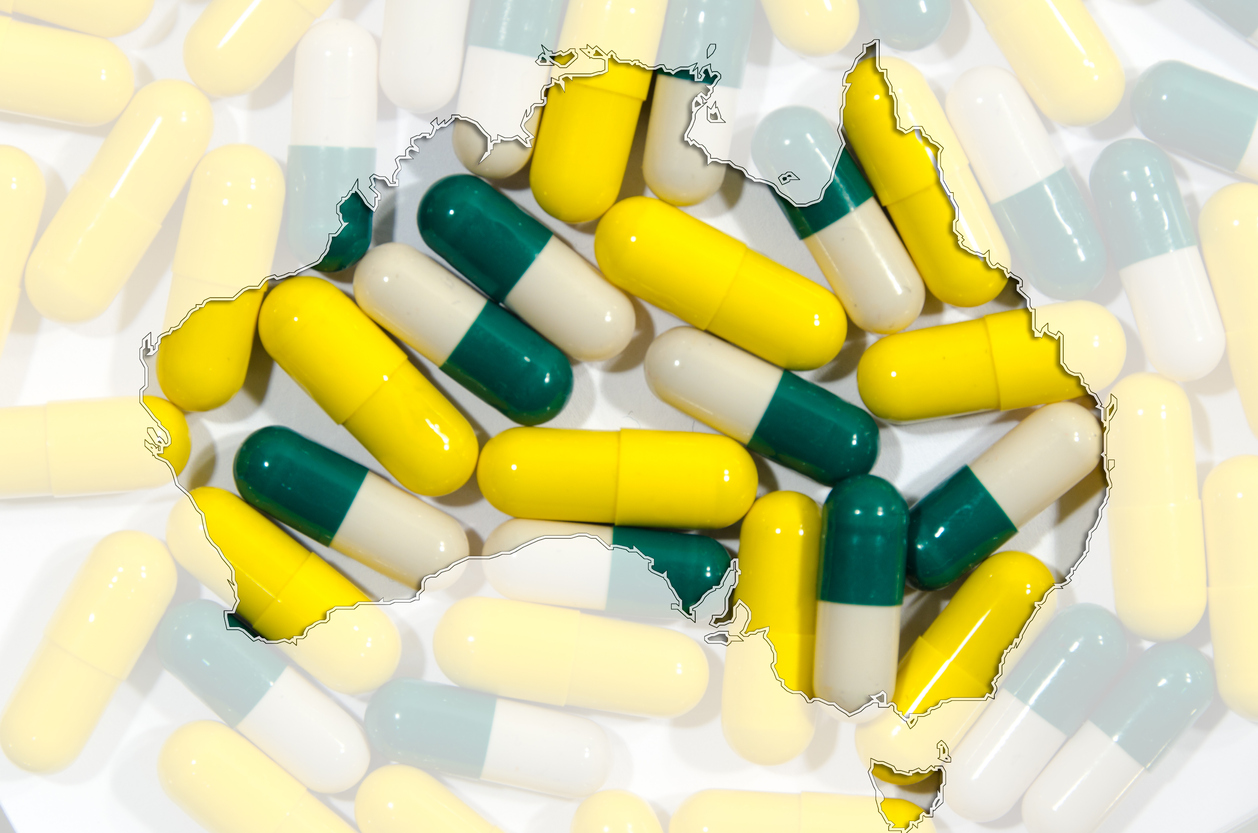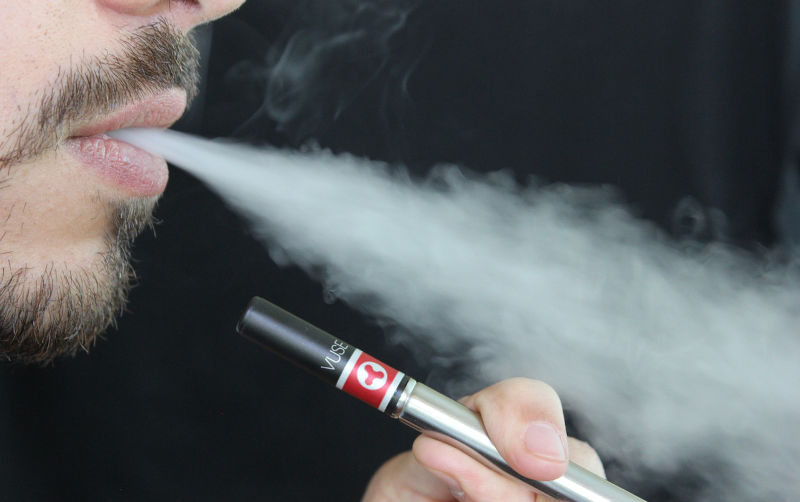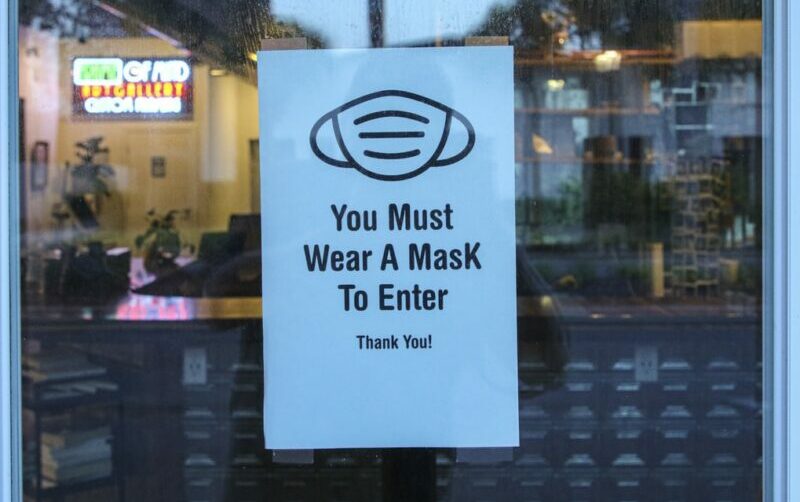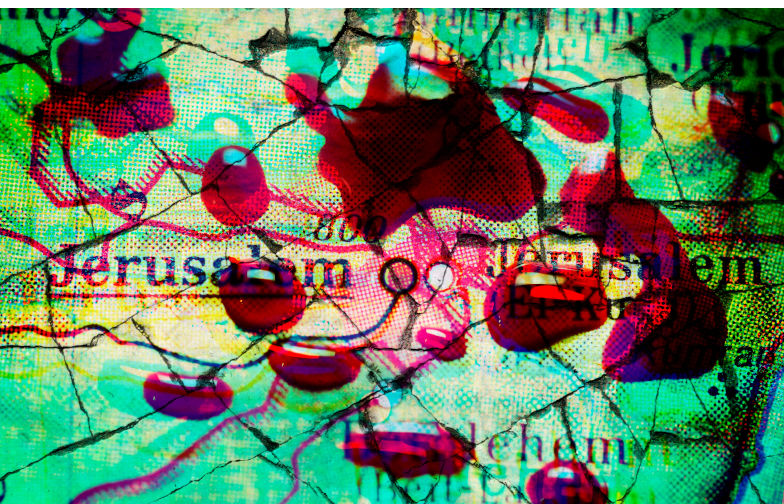In 1997, the World Health Organisation invited me to be a short-term consultant to visit Iran and advise on HIV control among people who inject drugs and the spread from them to the large low-risk general population. At the time, HIV was spreading rapidly in Iran. I felt honoured to be invited to a country with such an ancient past. (more…)
Alex Wodak
-

Decriminalising drugs: “Open secret that most of the NSW Cabinet now support major drug law reform”
As Francis Hodgson Burnett said more than a century ago “at first people refuse to believe that strange new thing can be done, then they begin to hope it can be done, then they see it can be done – then it is done and all the world wonders why it was not done centuries ago.“ This is the spirit that is needed with drug policy.
(more…) -

Should NSW proceed with a Drug Summit?
A very comprehensive review of drug policy in NSW completed in 2020 was largely ignored for two and a half years. The Commissioner of the Inquiry understandably believes further consideration is redundant. The newly elected NSW government intends to keep a commitment made before the election to conduct a Drug Summit. They are right to do so and for several reasons. (more…)
-

The ACT legislated to decriminalise possession of personal quantities of illicit drugs
By the time the ACT Legislative Assembly passed legislation on 20 October 2022 to commence the decriminalisation of personal quantities of all illicit drugs in October 2023, drug law reform was already well on its way around the world. (more…)
-

Why vaping will be accepted as Australia’s response to tobacco
Vaping represents a historic opportunity to dramatically reduce Australia’s annual loss of 21,000 lives from smoking. But understandable intense hatred of tobacco companies and a strong preference to eliminate nicotine use has contributed to a hostility to vaping in Australia which is irrational and unsustainable. (more…)
-

The return of the state? The role of government in managing the pandemic
Many countries with very high rates of COVID infection and pandemic deaths had governments reluctant to intervene to protect public health because of a strong belief in small government. -

Four strategies to help vaccinate the world against COVID-19
To bring the COVID-19 pandemic under control, vaccination rates in the most vulnerable countries need to increase.
-

The price of inequality: vaccine nationalism and the Omicron variant
Australia’s ability to move on from the pandemic has been possible by hoarding vaccines and ignoring the vast majority of the world’s population.
-

The case for an Australian heroin trial: strong then, even stronger now
Australia once declined the opportunity to take a fresh, effective tack against heroin addiction. We should not lose a second chance.
-

Why the ‘war on drugs’ and law enforcement is ultimately futile
A national drug policy based heavily on attempts to interrupt supply has been an expensive failure and urgently needs reform. (more…)
-
Should pleasure from illicit drugs be included in consideration of drug policy?
In recent decades, the notion that law enforcement approaches to illicit drugs has failed, moved from heresy to orthodoxy. But drug policy till now has only been considered as the prevention of harm. It’s time for policymakers and the community to accept that the pursuit of pleasure should also be a consideration. A distinguished US Professor of Psychology has written a new book discussing his pleasure from using currently illicit drugs. (more…)
-
Police drug busts divert our attention from policy failure
Harm reduction is used in many policy areas and found to be generally effective, safe, cost-effective and well accepted. But when pragmatic harm reduction is applied to psychoactive drugs, it is often fiercely resisted by those preferring prohibition. The war on drugs provides media with attractive eye candy in the form of mounds of recently intercepted illicit drugs. (more…)
-
NSW Cabinet responds to a Special Commission of Inquiry into the Drug ‘Ice’
Drug policy has fallen into a deep rut in Australia: a growing consensus recognises that current arrangements have failed abjectly while governments and oppositions are unwilling to support significant reform. In NSW this past week, Cabinet was deeply divided about how to respond to a strong report recommending some modest reform. (more…)
-
ALEX WODAK. Draft recommendations supporting drug decriminalisation released by the NSW Special Commission of Inquiry into Ice
The Commissioner of the NSW Special Commission of Inquiry into Ice, Dan Howard QC, will now consider what amounts to a draft report by Council Assisting, Sally Dowling SC. He will submit his officIal report in January, to be then considered by the NSW Government. Council Assisting accepts that relying heavily on attempts to cut drug supplies has not only failed but seems to have made a bad situation even worse. The 104 draft recommendations support increased emphasis on harm reduction, expanded and improved drug treatment achieved with enhanced funding and some form of drug decriminalisation. (more…)
-
ALEX WODAK. What can be done to improve the safety of young people taking illegal drugs at youth music events?
Leaked recommendations from a NSW Coronial inquiry into the deaths of six young people after taking illegal drugs at youth music events highlights the resistance of Australian governments to harm reduction and their entrenched reliance on restricting the supply of drugs despite repeated failures of this approach. (more…)
-
ALEX WODAK. Drug law reform in the 2018 US mid term elections.The 2018 US midterm elections has important lessons for Australia regarding drug law reform. In ballot initiatives and elections for office, voters often supported drug law reform with only one major defeat. Presidential election years generally have many more ballot initiatives on drug policy.
The 2018 US midterm elections has important lessons for Australia regarding drug law reform. In ballot initiatives and elections for office, voters often supported drug law reform with only one major defeat. Presidential election years generally have many more ballot initiatives on drug policy. (more…)
-
ALEX WODAK. Drug Reform Series- Portugal’s successful drug law reform in 2001
Treating personal drug use as an administrative offence along the lines of a parking violation has worked well for Portugal. It has not only been a public health and public policy success but also a political one. (more…)
-
ALEX WODAK. Drug Reform Series -Drug policy: prohibition and punishment is just not effective
The failure and futility of drug prohibition has been well accepted among political elites in Australia for a long time. It is time we debated the merits of regulation, combined with targeted health and social intervention, rather than blunt prohibition and punishment. Such an approach is likely to be more effective, and fair. (more…)
-
ALEX WODAK. Why is the drug policy debate in Australia stuck?
Drug policy in Australia has been debated for decades but doesn’t seem to be getting close to resolution. However some progress is being made. Examples include the Victorian government’s decision in 2017 to establish a Medically Supervised Injecting Centre in Melbourne and the ACT government’s in principle decision in 2017 to allow a trial of pill testing. Social policy reform is always slow. The drug policy debate has some particular characteristics that make it especially difficult. (more…)
-
PETER BROOKS AND ALEX WODAK. A response to the open letter from Crown Resorts on gambling.
On Tuesday 31 October a rally to support Women against Gambling, coordinated by the Alliance for Gambling Reform ( pokiesplayyou.org.au), was held outside the Victorian Parliament. This was (amongst others) supported by Fiona Patten MLC to send a message to MPs not to weaken laws on gambling – which may occur when Parliament returns next week.
-
Drug policy and why Victoria deserves better from Premier Daniel Andrews. Part 3 of 3.
Bad drug policy has been good politics for several decades. We can thank US President Richard Nixon for this discovery. (more…)
-
ALEX WODAK. How can making drugs easier to access save lives? 10 FAQs about drug law reform. Part 2 of 3.
Police, prison officers and politicians are standing side-by-side with drug users to call for law reform. They say the current practice of jailing people for personal use and possession instead of focusing on their health and safety leads to unacceptable outcomes: lives lost and lives ruined. But it’s hard to get your head around the idea that making drugs more easily available could actually reduce the risks. Here are answers to some frequently asked questions about drug law reform. (more…)
-
ALEX WODAK. Do large seizures of illicit drugs really make a difference?
Large seizures of illicit drugs always attract considerable publicity, and are no doubt very positive for the law enforcement agencies and politicians involved. But do they benefit the community? (more…)
-
ALEX WODAK. Global drug prohibition and national security
Buddhists say that everything has a cause and everything has an effect. Violence, oppressed minorities, rampant corruption and failed states are both causes and effects of global drug prohibition. Serious threats to national security are an important but rarely discussed cost of drug prohibition. (more…)
-
Alex Wodak. Endgame in the protracted drug policy debate: are we there yet?
The long running debate about illicit drugs policy has moved a great deal in the last five years. But social policy reform is a different matter from a debate. Actual reform usually takes many decades.
The recent growing consensus regarding the abject failure of a criminal justice dominated approach to drugs is very encouraging. Retired and even serving police commissioners have been lining up before the microphones to acknowledge the comprehensive failure of efforts to date. The seizure announced 16 February of 720 litres liquid methamphetamine, said to be worth $1.2 billion, represents the largest drug bust in Australia’s history. But there was little optimism that even a seizure of this size would make a difference to the market. In 2014, 91% of Australian drug users surveyed reported that ice was ‘easy’ or ‘very easy’ to obtain.
In 1994, I went with Ms Ann Symonds, a (then) member of the NSW parliament, to see the (then) Minister for Health, Senator Graham Richardson. My message was that the drug policy he was responsible for could never be effective. I showed him a report written by a US coast guard operator who had estimated the numbers of pedestrians, cars, trucks, buses, containers, ships and planes entering the USA every year. The official had also estimated the volume of cannabis, heroin and cocaine entering the US every year. He showed that US authorities had a better chance of finding a needle in a haystack than finding most, let alone all, of the drugs entering his country.
Seventeen million passengers and several million containers arrive in Australia every year. Only three in every 1,000 containers are searched. Containers carrying frozen food have to be thawed out before they can be searched and this involves potentially considerable financial loss and inconvenience as the once frozen food has to then be discarded. Somehow Australia’s 27 thousand km coast line has to be watched 24 hours a day, 365 days a year.
Senator Richardson seemed to accept the logic of the presentation. As he showed us out, he suggested that Australia could not move faster than the international community would allow us to do, that the attitude of leaders of the medical profession to any change in drug policy would be critical and that change would also not be possible without widespread community support.
Twenty-two years later, the shape of future global drug policy is becoming clearer. The international drug policy consensus is now irrevocably broken. Consequently, countries now have much more freedom to design a drug policy that the community and its politicians believe is appropriate for its circumstances rather than accept the one size fits all approach required till now.
The threshold step required is to redefine drugs as primarily a health and social issue. Several steps then follow. First, criminal sanctions for the production, sale and use of drugs will have to be reduced and, where possible, eliminated. Second, drug treatment will have to be expanded and improved to reach the same level as other health services. Third, as much of the drug market as possible will have to be regulated. Parts of the drug market are already regulated including methadone treatment for heroin users, the needle and syringe program and Sydney’s Medically Supervised Injecting Centre. Fourth, the community will have to ensure that life for young people should not require intoxication to be bearable. This means reducing poverty and improving the housing, education and employment conditions for our young people, especially our disadvantaged youth. When life is bleak and without hope, a few hours of chemical vacation becomes quite attractive. Policy change should occur in small increments with rigorous evaluation of policy effectiveness and adverse effects.
It is easy to dismiss the complexities of a political resolution of our current drug policy mess. But our politicians have at times achieved wonders. In the 1980s, politicians from all the major parties put aside their differences and worked together to prevent Australia being over run by HIV. Australian politicians also excelled themselves in tobacco control. These were world-class achievements against huge obstacles. Australians owe our politicians a debt of gratitude. The introduction of heroin-assisted treatment in Denmark was brought about by all the country’s political parties agreeing privately to jointly support the decision. The political gridlock of recent years in Australia is not encouraging but that will eventually pass.
The costs of political action on drug policy are falling while the costs of inaction are rising. The time for ever-more gesture politics on drug policy is slowly coming to an end. When dealing with communities locked into dysfunctional policies, just as when dealing with alcohol or drug dependent patients or loved ones, it is critical to retain a sense of hope.
It is important to remember our history. Australia permitted medicinal use of heroin until importation and production was banned in 1953. Edible opium was taxed and regulated in Australia until 1906. Medicinal cannabis was used lawfully in Australia until the 1970s. In the US, Coca Cola contained cocaine until 1903.
The required changes in drug policy are substantial. But we and other countries have made equally substantial changes before. Faced with such momentous change it is easy to convince ourselves prospectively that the reforms required are unachievable but we may end up reflecting in retrospect that change was inevitable.
In a recent Essential poll (16 February), 68% thought the ‘Federal Government should do more’ about illicit drugs followed by obesity (57%), food safety (50%), smoking (46%), Zika virus (36%), HIV (34%) and Ebola (27%).
Respondents also rated illicit drugs (44%) as their most serious concern followed by food safety (26%), obesity (25%), smoking (23%), Zika virus (16%), HIV (14%) and Ebola (12%). This suggests that voters expect Australian governments to act effectively on illicit drugs sooner rather than later.
Dr Alex Wodak AM is President of the Australian Drug Law Reform Foundation
-
Alex Wodak. Incarcerating Nations
In the 18th C Britain struggled to accommodate a growing prison population incarcerated for social reasons, mainly poverty. After the America revolution in 1776, Britain became unable to keep sending its excess prisoners to America. The solution was to establish a prison colony in Australia in 1788. Britain never learnt that incarceration is not a solution for serious social problems. Neither did the USA. Nor for that matter did Australia.
With 130 prisoners per 100,000 residents in 20012/13, Australia had the 15th highest incarceration rate of the OECD countries, far behind the OECD and world leader, the USA (701) and well behind New Zealand (7th, 192) and just behind the United Kingdom (13th, 147).
Incarceration rates have been increasing in many countries in recent decades, including Australia. Rent seekers have had a wonderful time. With 4.4 % of the world’s population the USA has almost 25% of the world’s prison inmates. After Nixon declared a War on Drugs in the early 1970s, the US incarceration rate increased five fold peaking in 2007. As with many other fads, California was an early market leader in the US with conservative Republicans, private prison operators and corrections unions working together, each benefitting enormously. Increasing the number of prisoners, building more prisons, improving the wages and conditions of prison guards and expanding the private prison sector worked well at the ballot box as long as voters could continue to be convinced that crime was a serious and ever growing threat. In an era when taxation revenues have been steadily falling, funding extra police, courts and prison costs never seemed a problem. California discovered that cutting higher education could pay for its law and order policies. No one seemed to mind or even notice. The taxpayer even picked up the tab for this electoral Magic Pudding.
All good things come to an end. Eventually. US incarceration rates started declining 7-8 years ago. Now President Obama, supported by politicians from across the political spectrum, has made it clear that he wants to end America’s jails and prisons binge. In an important 45 minute speech1 on criminal justice policy in Philadelphia on 14 July to the National Association for the Advancement of Coloured People (NAACP), Obama reminded his audience of the huge gap between the vision of Amertica’s ‘founding [fathers] that we are all created equal, endowed by our Creator with certain unalienable rights’ with ‘the realities that we live each and every day’. Obama noted that the aims of the NAACP had moved from ending lynching to ending the now more subtle forms of bigotry and gross disparities in opportunity. He reminded his audience that ‘since my first campaign, I’ve talked about how, in too many cases, our criminal justice system ends up being a pipeline from underfunded, inadequate schools to overcrowded jails.’ Obama noted that ‘We keep more people behind bars than the top 35 European countries combined’. Increasing from 500,000 in 1980 to 2.2 million today. [The number of correctional inmates] ‘has quadrupled since 1980. Our prison population has doubled in the last two decades alone’. He went on to argue that the main factor driving up the US prison population has been the steadily increasing number of nonviolent drug offenders locked up for longer and longer periods. As Obama observed, the shocking disproportionality of US prison sentences also ended up costing taxpayers $80 billion/year – a sum that he said ‘could pay for universal preschool for every 3-year-old and 4-year-old in America, or a doubling of the salary of every high school teacher in America or investment in new roads, bridges and airports, job training programs, and research and development’. For the cost of keeping ‘everyone locked up for one year’, Obama said ‘we could eliminate tuition at every single one of our public colleges and universities’.
Minorities in the USA have paid a tragically high price for this binge on incarceration. As Obama noted ‘African Americans and Latinos make up 30 percent of our population; they make up 60 percent of our inmates. About one in every 35 African American men, one in every 88 Latino men is serving time right now. Among white men, that number is one in 214’.
But nothing lasts forever. Obama observed that ‘for the first time in 40 years, America’s crime rate and incarceration rate both went down at the same time’ last year. He supporting increased investment in communities to reduce crime, increased judicial discretion, greater use of non-custodial sentencing options and prison reform.
Many fads start in California and then spread to the rest of the USA and then to the rest of the world. America has now woken up to the huge social and financial cost of its addiction to incarceration. But like many other addictions, getting this addiction under control takes time and a lot of energy and motivation.
NSW recently broke though the 12,000 inmate barrier. More than 30,000 Australians will go to sleep in a prison cell tonight, no doubt some for very good reason. It’s high time Australian political parties agreed to abandon the Laura Norder debate and work together to reduce our prison population. Prisons should only be used as a last resort. And offenders should be sent to prison as punishment and not for punishment.
Dr Alex Wodak AM is President, Australian Drug Law Reform Foundation
1 https://www.whitehouse.gov/the-press-office/2015/07/14/remarks-president-naacp-conference
-
Alex Wodak. How should medicinal cannabis be provided lawfully in Australia?
Current Affairs
Ms Sussan Ley, the Federal Health Minister, recently acknowledged that medicinal cannabis was likely to proceed in Australia but advocated proceeding cautiously. A Private Members Bill is under consideration and seems to have strong support including backing from both sides of the aisle. So the question is now increasingly moving from ‘whether’ to ‘how’ to proceed with medicinal cannabis.
Hippocrates said that doctors should ‘cure sometimes, treat often, and comfort always’. Medicinal cannabis is about the need for the health care system to try to ‘comfort always’. What should the lawful provision of medicinal cannabis in Australia hope to achieve?
First, medicines are expected to be effective. Medicinal cannabis usefully reduces distressing symptoms in a number of conditions when conventional medicines have proved ineffective and/or had unacceptable side effects. There is sufficient evidence of sufficient quality to conclude that medicinal cannabis is effective. Though conventional medicines may often be more effective, they don’t work often enough for medicinal cannabis to be a useful back up. This is the view of many experts and many highly regarded scientific organisations. However some experts and organisations have different views. Medicinal cannabis does not appear on current evidence to cure any condition. But some laboratory research suggests that cannabis may cure some conditions. A different conclusion could be justified in the future.
Second, we expect medicines to be safe. A recent review concluded that ‘97% of the adverse effects of medicinal cannabis in clinical trials were minor, with dizziness (20%) being the most common’. The prestigious US Institute of Medicine determined that the acute adverse effects of cannabinoids were ‘within the risks tolerated for many medications’.
Third, these days we increasingly insist that medicines are also cost-effective. There is little information about the cost-effectiveness of medicinal cannabis but it is likely to be cost effective. It may sometimes help to avoid expensive conventional medications or even shorten costly hospital stays.
And fourth, we would want to make sure that medicinal cannabis does not impair the integrity of Australia’s highly regarded pharmaceutical regulatory system (i.e. the Therapeutic Goods Administration).
As our politicians increasingly move from the ‘whether’ to the ‘how’ question, we should start thinking about the guiding principles for implementation.
A national approach is preferable to individual approaches from six states and two territories. So far we have had, or soon will have had, five parliamentary inquiries (Tasmania, NSW, Commonwealth, ACT, Victoria). Let’s hope that we can avoid a situation where residents of one jurisdiction where medicinal cannabis is not approved try to obtain what they desperately want from another state or territory where cannabis has been approved.
Regulated cannabis is always preferable to black market cannabis as it is virtually identical from one batch to the next, has known concentrations of the key psychoactive constituents and any chemical or microbiological contaminants will be below set safety limits. Currently an unknown but presumably large number of people, some for probably legitimate reasons, use unregulated cannabis they have cultivated or bought from the black market. Surely we can do better than that.
When deciding whether or not to start medicinal cannabis, the recreational use of the drug should be ignored. The ‘whether’ question should be decided only on the evidence of effectiveness and safety – and ideally also cost effectiveness. When considering ‘how’ medicinal cannabis should be provided, we cannot ignore the large unregulated market for recreational cannabis.
The introduction of an intervention not previously part of the official health care system should be slow and cautious. It is easier to liberalise a too-restrictive approach than restrict a too-liberal approach. Getting the balance right is important as the more restrictive the approach adopted, the larger the proportion of patients who will use unregulated supplies.
Any system for administering medicinal cannabis should be sufficiently flexible to allow for changes as knowledge increases over time.
Ill people who use medicinal cannabis and their carers and doctors should not have to worry about possible legal repercussions provided that they stay within unambiguous legal boundaries covering cultivation, purchase, possession, use and prescribing.
The system established for medicinal cannabis should identify approved medical conditions and may also need to identify required diagnostic criteria and criteria indicating sufficient severity. As knowledge of the benefits of medicinal cannabis is increasing rapidly, the approved medical conditions should be reviewed frequently. In some exceptional cases, where there is limited evidence there should also be scope for approving medicinal cannabis on compassionate grounds.
Decisions about medicinal cannabis for individual patients should be made by independent experts and not by Ministers, Department of Health officials or Members of Parliament.
Lawful cultivation by patients and/or their carers should be an option but not the only option as some will be unable or too ill to cultivate their own cannabis.
Most patients requiring medicinal cannabis are likely to have limited funds after some years of poor health, so affordability is an important consideration.
The least-worst way of ingestion at present is inhalation of cannabis vapor. A new pharmaceutical product (nabiximols, Sativex®), the next best option, is in Australia currently approved for only one condition, virtually unavailable and expensive. Older pharmaceutical preparations (Nabilone, Marinol), now obsolete, were too poorly and erratically absorbed to succeed commercially and are therefore unsuitable. Administration of cannabis by inhalation of smoke may sometimes have to be grudgingly tolerated, for example patients with a short life expectancy who have been happily smoking cannabis for some time. Liquid preparations will be needed for children.
Medicinal cannabis presents a number of challenges for policy makers but none are impossibly difficult. After all, medicinal cannabis is now available in about twenty other countries.
As Whitlam’s 1972 campaign slogan said ‘it’s time’.
Dr Alex Wodak AM, President, Australian Drug Law Reform Foundation
-
Alex Wodak. Prohibition and its discontents: who really killed Chan and Sukumaran?
The fall out from Indonesia’s execution of Chan and Sukumaran for drug trafficking continues. In their unprecedented press conference on 3 May, the leaders of the Australian Federal Police argued that under existing laws and guidelines, they were obliged to share intelligence with their Indonesian counterparts. Moreover, under similar conditions in future, the AFP expects that similar decisions will be made. The basic problems are that many young Australians travel to countries that still retain the death penalty for drug trafficking (and some other offences) and prohibition is still the global drug policy. So the execution of Australians and citizens of other nationalities for drug trafficking in future are inevitable.
As so often happens with tragedies, the search is now on for someone or some organization to blame. The problem is that everyone is responsible while no one is also responsible: this is in reality a system problem.
The members of the firing squad weren’t really responsible as they were just carrying out orders. The Indonesian police and court officials weren’t really responsible as they were merely implementing laws that their parliament had passed. President Widodo wasn’t really responsible as he was, like any good democratic leader, merely responding to overwhelming popular opinion in his country. Howard and Rudd weren’t responsible either because in their earlier support for the execution of the Bali bombers they reflected overwhelming popular opinion in their country at the time. Abbott and Bishop weren’t responsible as they inherited this mess from their predecessors. And Chan and Sukumaran weren’t really responsible because they were merely pawns of higher-level criminals who managed to evade detection. The seven mules weren’t responsible either because Chan and Sukumaran had coerced them. As is so often the case in drug trafficking cases, the fall guys who got caught and paid the ultimate price came from poor minority families.
Compounding the tragedy is the ineffectiveness of drug prohibition, now acknowledged with increasing frequency. More than half a dozen retired and now even serving Australian Police Commissioners have conceded that drug law enforcement has minimal impact on the drug market. A year ago, Prime Minister Tony Abbott admitted that the war on drugs is a war we cannot win but nevertheless argued that it is a war we should keep fighting. In June 2011 the Global Commission on Drug Policy, consisting of more than twenty retired world leaders, released a report documenting the failure of drug prohibition and called for a consideration of options. In the last four years, the Global Commission on Drug Policy has recruited more world leaders and issued more reports. Some countries are now starting to reform their drug policy. In April 2016 in New York, a United Nations General Assembly Special Session will consider the growing crisis in global drug policy.
The seizure of 390 kg of heroin off the coast of Part Macquarie in 1998 did not affect the price or purity of heroin in Australia. Chan and Sukumaran were executed for their role in the attempted trafficking of 8 kg of heroin. What these executions may have done for a time is increase the perception of risk for drug traffickers. That might then get translated into higher prices and greater profits which might in turn convince some wavering wannabe drug trafficker to try their luck. Whatever else drugs might be, they are also a market with buyers and sellers agreeing on a price for a quantity of a commodity. But unlike most markets, drugs are bought and sold in a pyramid market where buyers are also sellers.
If drug prohibition was to ever be effective anywhere it should be in prisons. Yet drugs are available in most prisons. A few years ago on an international assignment I asked a prisoner in an Indonesian drug prison near Jakarta whether inmates could still obtain drugs. ‘Yes’ he replied, ‘but they are usually more expensive than in the community though sometimes drugs are less expensive inside than outside prisons’.
So why do we keep fighting a war on drugs when an increasing number of prominent members of the community accept that this is futile?
Professor Craig Reinarman, a US academic concluded that ‘drugs are richly functional scapegoats. They provide elites with fig leaves to place over unsightly social ills that are endemic to the social system over which they preside. And they provide the public with a restricted aperture of attribution in which only a chemical bogeyman or the lone deviants who ingest it are seen as the cause of a cornucopia of complex problems.’
We continue to fight a war on drugs for several reasons. Drug wars are still useful politically. Many politicians still think the transitional costs of changing drug policy are too high. But there are now supporters of drug law reform among politicians of virtually all parties. Law enforcement aimed to reduce the supply of drugs employs many people. The costs of continuing the current failed policy are increasing while the costs of changing policy are declining as more countries move out from the crumbling straightjacket of international drug control.
Australians who wish to avoid more tragedies like Chan and Sukumaran should support drug law reform and the universal abolition of the death penalty.
Dr. Alex Wodak AM, President, Australian Drug Law Reform Foundation, Director, Australia21
-
Alex Wodak. The toxic combination of illicit drugs and politics: Australia confronts ice
John Ehrlichman, the Watergate conspirator, claimed to have come up with the idea of waging a war on drugs while he was a member of President Nixon’s ‘Committee for the Re-Election of the President’, wonderfully referred to as ‘CREEP’. The aim, Ehrlichman told Nixon, was to ensure that the elderly wealthy white voters who turned out in such large numbers to vote for Nixon in 1968 would turn out again in 1972 on polling day. The plan was to appeal to their contempt for the young, poor and black using illicit drugs as the perfect ‘dog whistle’. Despite the albatross of the Vietnam War hanging around his neck in 1972, Nixon won 49 of the 50 states in a landslide victory. Politicians around the world took note. An electoral magic pudding had just been discovered.
In the early 1970s, US Congress established a National Commission on Marijuana and Drug Abuse but President Nixon got to appoint most of the members. Nixon stacked the Commission with people he thought would support the sorts of recommendations he wanted. When Nixon heard that the Commission was leaning to recommend ending cannabis prohibition he called in the chair, Raymond Shafer. The Watergate tapes recorded the conversation: Nixon: “You’re enough of a pro to know that for you to come out with something that would run counter to what the Congress feels and what the country feels and what we’re planning to do, would make your Commission just look bad as hell….Keep your Commission in line.” Towards the end of the meeting Nixon advised Shafer that he had not heard yet from the committee that was considering Shafer’s application to become a Federal judge. In the end Nixon rejected the Commission’s recommendations and Shafer did not get the judicial position he had applied for.
Fast forward to 5 September 1989 when US President George HW Bush addressed his nation on television and held up a bag of crack cocaine from a recent arrest close to the White House. President Bush used the address to announce a major ramping up of the war on drugs but he did not tell his fellow Americans that, on instructions, law enforcement officials had lured the reluctant black crack seller to Lafayette Park, near the White House. President Bush was under considerable pressure at the time as opposition rose to his economic restructuring.
On 8 April, 2015, Prime Minister Abbott, also under considerable political pressure, announced a new Ice Task Force. Yet not so long ago, in December 2014 the Abbott government had established a new drug advisory body, theAustralian National Advisory Council on Alcohol and Drugs (ANACAD) whose top priority was to come up with effective responses to ice. ANACAD had earlier taken over from the Australian National Council on Drugs.
For decades drug policy has been a very useful prop for those seeking election or re-election or a boost to sagging opinion polls. But communities around the world are starting to be a lot more discerning about fear-based political machinations involving drugs. In the USA, several different polling organisations have found that a growing majority now supports regulating ‘marijuana’ (i.e. cannabis). In Australia, support for once controversial but pragmatic interventions like needle syringe programs and supervised injecting facilities continues to slowly climb.
A few years ago, some retired Australian Police Commissioners started commenting that our drug law enforcement was more effective than previously and about as effective as it ever could be but still the impact on the drug trade was negligible. Now even some serving Police Commissioners have made similar comments.
The community’s favourite drug intervention is education. But the results of mass and school based education campaigns are pretty modest. The expectations of the community and politicians about the impact of drug education are unrealistic.
Drug treatment has worthwhile benefits but improvements are usually much slower than the dramatic progress the community wants. But drug treatment in Australia, as in most countries, has a limited capacity, range of options and flexibility. During alcohol prohibition in the USA (1920-33), treatment for people with alcohol problems disappeared. Similarly, drug treatment struggles in countries where drugs are defined primarily as a criminal justice issue. Australia will make very little progress with ice while most people badly wanting help have to wait in a queue for six months as they mostly do now.
Although drug problems are found across the economic and social spectrum, they are more common in severely disadvantaged populations. Also, countries with greater inequality, like Australia, seem to have worse illicit drug problems. Support for reducing inequality in Australia and other countries is growing with the case so far made largely on the grounds of improving the economy. But a fair case can also be made that less inequality would reduce some of our social problems including illicit drug use.
The $64 million question that has not been asked about ice is why the drug market started providing this drug in the first place. For me the answer seems clear. Drug prohibition encourages more dangerous drugs to replace less dangerous drugs just as bush cannabis morphed into skunk and then Spice, powder amphetamine morphed into ice and ecstasy morphed into related but much more dangerous compounds.
We haven’t got there yet but Australia is slowly moving to acknowledge that it’s not so much illicit drugs that are dangerous as having a drug market that is completely unregulated. Economic forces ensure a vibrant drug black market while political forces till now have precluded a pragmatic arrangement. In the short term, political forces usually dominate but in the long term, economic forces prevail.
Dr Alex Wodak AM, President, Australian Drug Law Reform Foundation, Board Member, Australia21
-
Alex Wodak. Why is illicit drug use considered evil?
It seems self-evident to many that the use of illicit drugs is evil. But why? When pressed, the most common response to this question is that illicit drug use is evil because it is against the law. So the next question is ‘why is the use of certain drugs illegal?’ State parliaments in Australia started banning the use of certain drugs even before Federation. In the last half century, Australia signed and ratified three international drug treaties (1961, 1971, 1988) which required domestic parliaments to pass laws imposing criminal sanctions on people who use or traffic drugs.
In the late 19th century, opium became the first drug banned in Australia. But opium was initially only prohibited if it was smoked. At that time, Chinese people on the goldfields were the only people in Australia smoking opium. The majority of Australians at that time had access to edible opium which remained lawful and taxed until it was prohibited in 1906. Edible opium is said to have remained readily available after the 1906 ban but the Commonwealth lost an annual income of £ 60,000. Was opium smoking acceptable before it was banned and evil afterwards? Likewise, was edible opium acceptable until 1906 but did it only become evil afterwards?
Australia was represented at the 1925 Geneva Convention on Opium and Other Drugs which agreed to ban the non-medical use of the opium, coca and cannabis plants and drugs derived from them. Accordingly, the Commonwealth Government banned the importation of cannabis in 1926 and requested the states to pass legislation banning cannabis. Victoria (1928), South Australia (1934), NSW (1935), Queensland (1937), Western Australia (1950) and Tasmania (1959) complied. If cannabis use in Australia is now evil, when did it become so? Was it evil when Prime Minister Tony Abbott, Communications Minister Malcolm Turnbull and former Prime Minister Julia Gillard used cannabis in their youth to become relaxed and comfortable? Was it evil when US Presidents Bill Clinton, George W Bush and Barack Obama used cannabis in their youth?
Following international pressure, believed to have originated in the USA, Australia banned the production and importation of heroin in May 1953. Existing heroin stocks could be used medicinally till exhausted but could not be replenished. The decision to ban medicinal heroin was criticised at the time by the then Director General of the Commonwealth Department of Health, the Presidents of several Royal Colleges (Surgeons, Physicians and Obstetricians andGynaecologists) and the President of the British Medical Association (before the Australian Medical Association was established). So if the use of heroin is now evil, was it already evil when used medicinally before 1953 or did it only become so when used recreationally after it was prohibited?
If the use of illicit drugs is not intrinsically evil, then we have to ask why their sale and purchase is evil? The use of illicit drugs might well be unwise, even recklessly unwise, without such use constituting evil. Most members of the community will need little convincing that the injection into a vein of an unsterile powder of uncertain constituents and strength bought from a stranger is extremely unwise. But is it evil?
In 1895, Oscar Wilde received a 2-year prison sentence with hard labour for sodomy. Alan Turing, who had contributed substantially to the Allied defeat of the Nazis in WW II and the development of computers, was found by a British court in 1952 to have had sex with another man. Turing committed suicide rather than face the consequences. Homosexuality was considered a crime when Wilde and Turing were alive although it has since been removed from the criminal code. Same gender marriage is now lawful in the UK. Did Wilde and Turing commit evil acts even though today the same acts are no longer considered a crime? Queen Elizabeth has apologised for the way Turing was treated. It is not just the law and the community which has changed its view about the nature of homosexuality. In 1973, the American Psychiatric Association reclassified homosexuality as a lifestyle rather than a disease.
A vigorous international debate about the effectiveness of drug law enforcement is now growing. Senior drug law enforcement figures now increasingly acknowledge the futility of efforts to restrict the availability of illicit drugs. But the real debate we should be having is about the fairness and justice of laws which criminalise the use of certain drugs (but not other drugs which create much more harm).
In 2008, (then) Father Peter Norden noted that the gospel said ‘When I was hungry, you gave me to eat, when I was naked you clothed me, when I was in prison you visited me.’ Norden argued that “Jesus today would have included another couple of phrases, perhaps, ‘When you were mentally ill, you walked with me, when you were addicted, you stood by me. ‘ Not that you walked away from me or sat in judgement of me”. (http://www.abc.net.au/radionational/programs/encounter/faith-and-the-fix/3174376#transcript) Walking away from and judging people struggling with drug problems worked well politically for decades. But it has been a disaster for many people who use drugs, their families and communities. This doesn’t even begin to describe its impact on countries which have been the source of illicit drugs or through which such drugs have been transited.
Whether or not our current drug laws are effective, or whether alternative policies might be less ineffective are important questions. But the most fundamental question we should be asking ourselves is whether our drug laws are fair and just.
Dr Alex Wodak AM is President, Australian Drug Law Reform Foundation.
